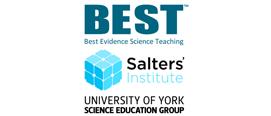- View more resources from this publisher
 Best Evidence Science Teaching
Best Evidence Science Teaching
Explaining evolution
These diagnostic questions and response activities (contained in the zip file) support students in being able to:
- Recall that all living organisms need energy for life processes, which is provided by cellular respiration.
- Distinguish between cellular respiration and breathing, including the nature of the processes and where they take place.
- Link living animals’ and plants’ need for oxygen and the presence of mitochondria in their cells to aerobic respiration.
- Describe aerobic cellular respiration using a simple model of the process, including what it uses as fuel (glucose plus oxygen) and what it makes as waste products (carbon dioxide and water).
- Apply understanding of photosynthesis and cellular respiration to explain when and why they take place in plants.
- Recognise that biomass is transferred through food chains, and energy for life processes is made available when some of this biomass is used as fuel for cellular respiration.
The resources include details of common misconceptions and a summary of the research upon which the resources are based.
Download the zip file for all the questions and activities.
More resources like this can be found on the BEST webpage: Best Evidence in Science Teaching
Show health and safety information
Please be aware that resources have been published on the website in the form that they were originally supplied. This means that procedures reflect general practice and standards applicable at the time resources were produced and cannot be assumed to be acceptable today. Website users are fully responsible for ensuring that any activity, including practical work, which they carry out is in accordance with current regulations related to health and safety and that an appropriate risk assessment has been carried out.
Downloads
-
Preview - Explaining evolution 937.14 KB




